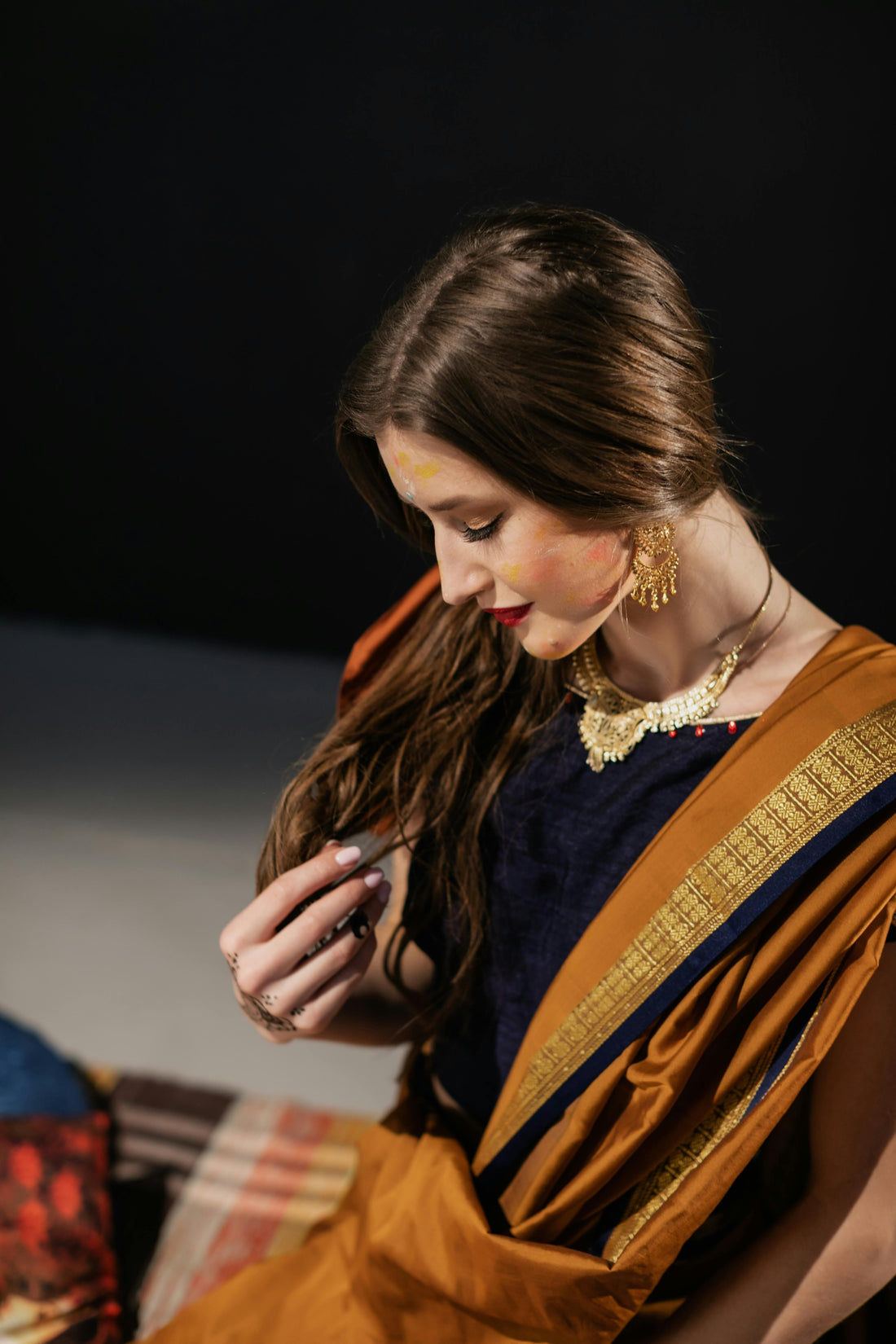The saree, a timeless and iconic garment, holds a special place in the world of women's fashion. Originating in India, the saree has evolved over the centuries, and today, it continues to be a symbol of elegance and grace. In this blog, we will delve into the enchanting world of sarees, exploring the latest trends in colors, cuts, and styles.

The Palette of Saree Colors
One of the most captivating aspects of sarees is the wide spectrum of colors available. Each color has its own symbolism and charm, making the choice of color an essential part of the saree experience.
Classic Reds: Red sarees have always been associated with weddings and festive occasions. In 2023, deep and vibrant shades of red are making a strong comeback. These sarees exude timeless beauty and confidence.
Pastel Perfection: Pastel-colored sarees, such as soft pinks, soothing blues, and mint greens, are in vogue this year. These delicate hues bring a touch of modernity and subtlety to traditional attire.
Earthy Tones: Earthy tones like rustic browns, moss greens, and warm terracottas are gaining popularity. These colors resonate with nature and are perfect for a rustic or bohemian look.
Metallic Sheen: Sarees with metallic accents, such as gold and silver, are becoming a favorite for evening events and celebrations. These sarees add a touch of glamour and opulence to your ensemble.
Monochromatic Magic: Monochromatic sarees, featuring a single color for the entire ensemble, are making waves. They create a sleek and sophisticated look, allowing the focus to be on the drape and texture of the fabric.
Saree Cuts and Drapes
While the traditional drape of a saree remains timeless, contemporary variations in cuts and drapes are redefining saree fashion.
Pre-Draped Sarees: Pre-draped sarees are a game-changer, especially for those who find saree draping a bit challenging. These sarees come with pre-pleated and pre-stitched designs, making them easy to wear while maintaining the saree's elegance.
Ruffled Edges: Ruffled saree edges are adding a playful and feminine touch to this classic attire. These frilly accents can be found on the pallu or along the borders, creating a flirty and stylish look.
High Slits: Sarees with high slits are making a bold statement. This style combines the grace of a saree with the contemporary appeal of a slit skirt, showcasing your legs and adding a dash of sensuality.
Cape Blouses: Cape-style blouses are a chic addition to the saree. These flowy, cape-like attachments replace the traditional blouse, offering a modern and dramatic twist to the ensemble.
Fusion Styles: Fusion saree styles are gaining popularity, blending saree elements with other clothing pieces like pants or skirts. This innovative approach to saree fashion allows for greater comfort and versatility.
Traditional vs. Contemporary Saree Styles
In today's fashion landscape, the choice between traditional and contemporary saree styles is a matter of personal preference.
Traditional Elegance: Traditional saree styles, like the Kanjeevaram and Banarasi sarees, continue to be cherished for their intricate craftsmanship and rich cultural heritage. These sarees are perfect for weddings and grand celebrations.
Contemporary Chic: Contemporary saree styles, such as the concept saree or the gown-style saree, offer a fresh take on this classic attire. These sarees are ideal for modern women who want to embrace tradition while staying fashion-forward.
Minimalist Sarees: Minimalist sarees with clean lines, minimal embellishments, and subtle designs are gaining popularity among those who prefer a more understated look.
In conclusion, sarees have transcended time and continue to be a symbol of grace and beauty in women's fashion. The choice of color, cut, and style allows you to personalize your saree look, whether you opt for the classic elegance of traditional styles or the contemporary appeal of innovative drapes. The saree is not just a piece of clothing; it's a canvas for self-expression and a celebration of culture and individuality. So, the next time you drape a saree, remember that you're not just wearing a garment; you're wearing a piece of art, tradition, and fashion history.
